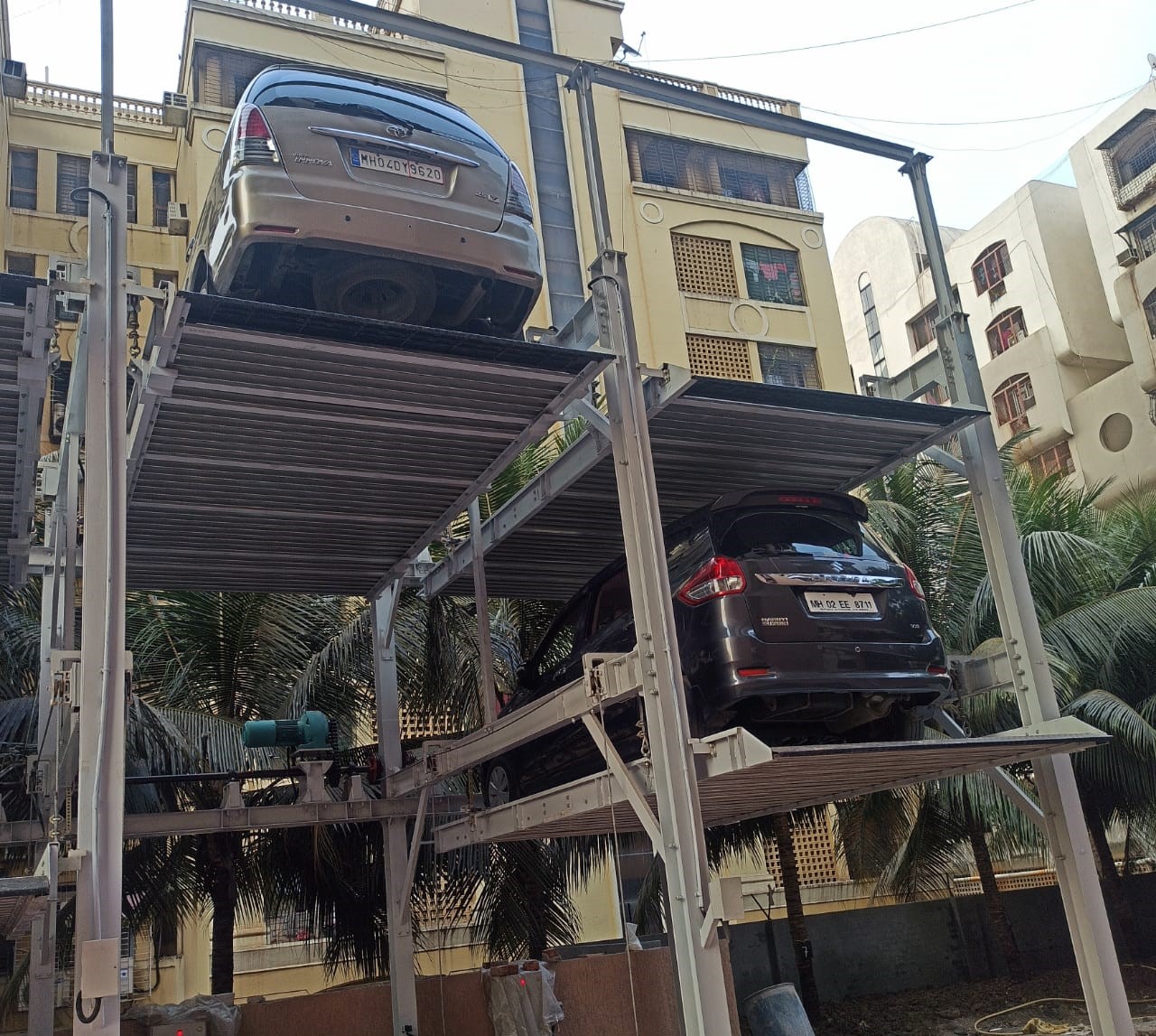India is witnessing rapid urban expansion, and with it comes the challenge of accommodating a growing number of vehicles in an already congested infrastructure. One of the most effective and innovative solutions to this problem is the Stack Parking System in India, a smart, space-saving method that optimizes parking in high-density areas.
With cities like Mumbai, Delhi, and Bengaluru running short on land and struggling with traffic congestion, stack parking offers a practical, modern solution that combines engineering innovation, urban planning, and environmental sustainability.
What Is a Stack Parking System?
A Stack Parking System is a mechanical or semi-automated system designed to stack cars vertically in multiple tiers. By doing so, it allows the parking of multiple vehicles in the space usually required for one, solving the space constraint in urban areas. These systems use hydraulic lifts, motors, or robotic platforms to move vehicles into available slots either above or below ground.
Why India Needs Stack Parking Systems
1. Skyrocketing Vehicle Ownership
India has over 300 million registered vehicles and adds millions more annually. Major metros are bearing the brunt of this automotive explosion.
2. Land Scarcity and High Real Estate Prices
Urban land is expensive and limited. Allocating large surface areas for traditional parking is no longer feasible.
3. Traffic Congestion and Pollution
Roadside parking reduces carriageway width, leading to traffic snarls and increased emissions. Stack parking moves cars off the streets.
4. Smart City Mission & Urban Planning Goals
The Government of India’s Smart Cities Mission emphasizes infrastructure efficiency, and stack parking fits right into that framework.
Types of Stack Parking Systems Common in India
- Two-Level Hydraulic Stackers
- Ideal for small residential and office setups.
- Simple up-down mechanism, cost-effective.
- Puzzle Parking Systems
- Cars move vertically and horizontally like a puzzle.
- Best for medium-to-high capacity installations.
- Rotary Parking Systems
- Vehicles rotate around a central axis, similar to a vertical carousel.
- Great for narrow spaces in dense urban zones.
- Tower and Pit Stackers
- Fully automated, high-rise or underground systems.
- Used in malls, airports, IT parks, and public areas.
Benefits of Stack Parking System in India
- Maximizes Land Use: Reduces the area needed for parking by up to 70%.
- Boosts Real Estate Value: Adds modern amenities and increases floor space utilization.
- Safe and Secure: Cars are stored in controlled environments with restricted access.
- Environment-Friendly: Less idling time and fuel usage during parking.
- Supports EV Integration: Many systems now include EV charging docks.
- Scalable and Customizable: Can be designed for any size from 2 to 200 cars or more.
Applications of Stack Parking in India
- Residential Buildings (especially gated societies in metros)
- Corporate Campuses and Business Parks
- Shopping Malls and Multiplexes
- Airports and Railway Stations
- Hospitals, Colleges, and Schools
- Government and Municipal Parking Zones
Cities Leading the Way in India
Mumbai
With extremely limited space and dense population, Mumbai has been a pioneer in adopting stack parking for residential and public use.
Delhi NCR
Metro stations, malls, and business parks use stack parking extensively to manage daily footfall.
Bengaluru & Hyderabad
IT hubs and smart townships rely on vertical parking to support employee and visitor needs.
Pune, Ahmedabad & Kochi
Emerging smart cities that are integrating stack parking in early urban planning.
Challenges in Adoption
- Initial Capital Costs
Though efficient in the long run, the setup costs can be a barrier for small projects. - Maintenance Requirements
Systems need regular service and skilled technical support. - User Awareness
Public needs basic orientation to use these systems comfortably. - Regulatory Approvals
Vary by city and municipality; need streamlined policy support.
Future of Stack Parking in India
As India pushes for smart, connected, and sustainable cities, stack parking will be increasingly integrated with:
- AI-based parking management systems
- Cloud access and app-based booking
- License plate recognition
- Solar-powered and battery-backed systems
- Integration with electric and autonomous vehicles
Stack parking is no longer just a “premium feature” — it’s a necessity in future-forward city design.
The Stack Parking System in India is not just a clever workaround for tight spaces, it’s a leap forward in urban infrastructure design. As cities grow vertically and space becomes more precious, stack parking offers a way to match convenience with efficiency. By embracing this solution today, India is building smarter, cleaner, and more organized urban environments for tomorrow.
